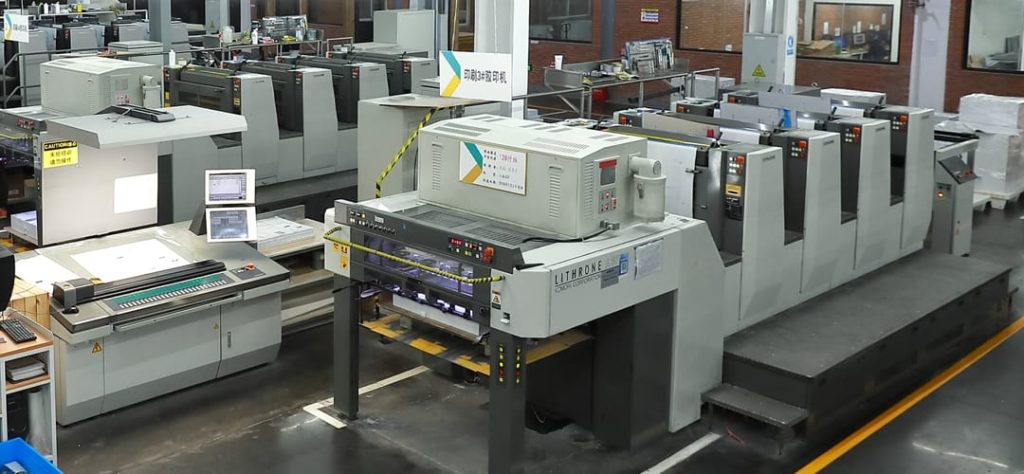Printing has come a long way since the days of Gutenberg’s revolutionary movable type press in the 15th century. Today, one of the most popular methods of mass production printing is offset printing. The offset printing process, which is a technique that transfers an inked image from a plate to a rubber blanket and then to the printing surface, is widely used because of its high image quality, cost-effectiveness, and efficiency.
This article aims to take you behind the scenes to explore the fascinating world of the offset printing process. We will delve into the fundamental steps of the process, the types of offset printing, and the advantages it offers over other printing methods.

Fundamental Steps of the Offset Printing Process
The offset printing process begins with the creation of plates. These plates, usually made of aluminum, are used to transfer the image onto the rubber blanket. The image to be printed is first created in a digital format, which is then used to expose the plate under a specific light source. This exposure causes the image area to become ink receptive while the non-image area, which is water receptive, repels ink.
Once the plates are prepared, they are mounted onto the plate cylinder in the printing press. The press itself consists of three cylinders: the plate cylinder, the blanket cylinder, and the impression cylinder. The plate cylinder holds the plate, the blanket cylinder carries the rubber blanket, and the impression cylinder applies pressure to push the paper against the blanket cylinder.
The offset printing process is based on the principle that oil (ink) and water do not mix. As the plate cylinder rotates, it comes into contact with rollers that apply water and ink. The water adheres to the non-image area, while the ink adheres to the image area. The inked image is then transferred to the rubber blanket on the blanket cylinder. The paper passes between the blanket cylinder and the impression cylinder, where the image is finally transferred onto the paper.
Types of Offset Printing
There are two main types of offset printing: sheet-fed offset printing and web offset printing.
Sheet-fed offset printing is used for short to medium print runs and high-quality printing. In this process, individual sheets of paper are fed into the printing press. This method is ideal for jobs that require specific paper types, special inks, or varnishes.
Web offset printing, on the other hand, is used for high-volume commercial printing. In this process, a continuous roll of paper is fed through the press. The printed paper is then cut into individual sheets. Web offset printing is faster and more economical for large print runs than sheet-fed printing.
Advantages of Offset Printing
The offset printing process offers several advantages over other printing methods. Firstly, it produces high-quality images with finer details and color fidelity. This is because the ink in offset printing is absorbed into the paper, reducing the distortion seen in other printing methods.
Secondly, offset printing is cost-effective for large print runs. Although the initial setup cost can be high due to the creation of plates, the cost per unit decreases with the increase in quantity. This makes offset printing an economical choice for large-volume printing jobs.
Thirdly, offset printing allows for a wide range of printing surfaces. Besides paper, it can print on cardboard, plastic, and even metal. This versatility makes it a popular choice for various printing needs.
Lastly, the offset printing process is highly customizable. It allows for the use of special inks and varnishes, and the ability to print on different paper sizes and types.
Conclusion
In conclusion, the offset printing process is a fascinating blend of technology and artistry. Its ability to produce high-quality images, its cost-effectiveness for large print runs, its versatility, and its customizability make it an indispensable tool in the world of printing. Whether it’s for printing books, newspapers, brochures, or packaging materials, the offset printing process has proven its worth time and again, making it a cornerstone in the printing industry.


